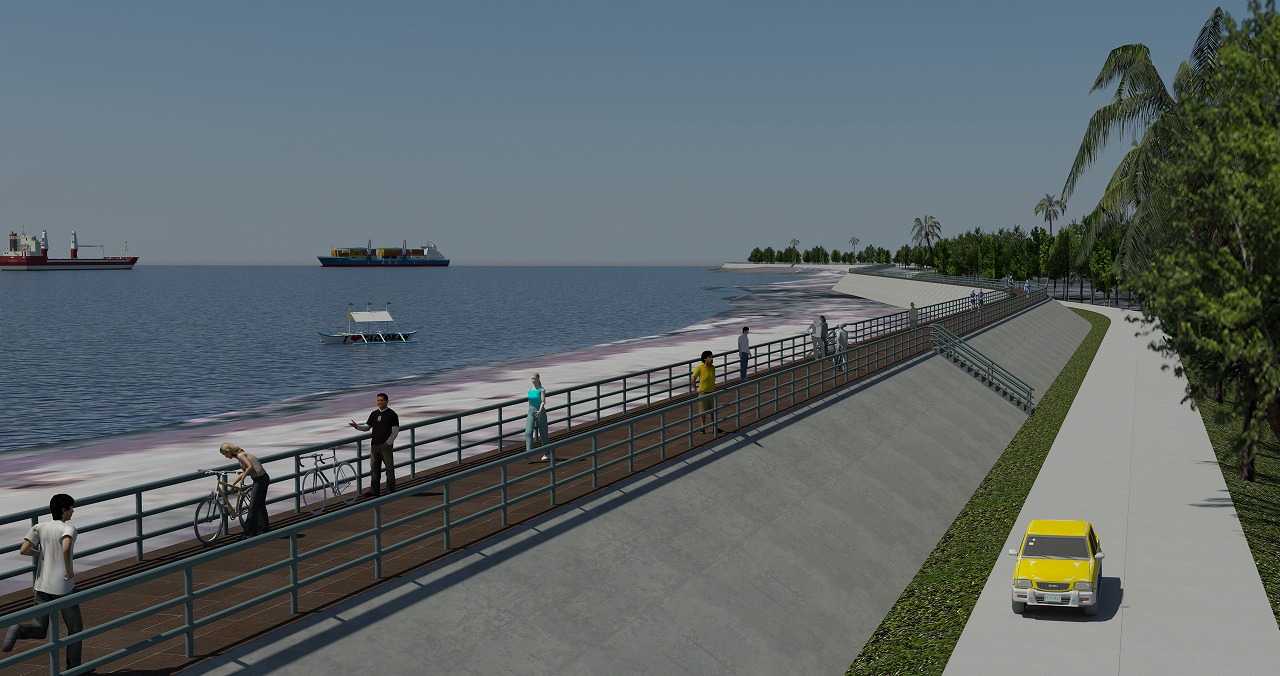‘Great Wall of Leyte’ is a monstrous disaster in the making – fisherfolk

Manila, Philippines – The fisherfolk group Pambansang Lakas ng Kilusang Mamamalakaya ng Pilipinas (PAMALAKAYA-Pilipinas) calls for the immediate suspension of the Tacloban-Palo-Tanauan Tide Embankment Project (TEP) for it will meant to displace more than 14,000 households, mostly fisherfolk from 1 city and 2 coastal municipalities in the province of Leyte.
The 7.9 billion tide embankment project (also known as ‘The Great Wall of Leyte’) is a long stretch of seawall from Tacloban to the town of Tanauan, Leyte, touted to protect people from storm surges. Of the 27.3 kms length of embankment, 20.1 kms are in Tacloban, 4.1 kms will cover Palo and 3.1 kms. in Tanauan. It shall have a height of about 4.5 meters and its center line said to stand 30 meters from the seashore.
In Candahug, Palo, several residents have already started demolishing their own houses and small businesses after the Department of Public Works and Highways (DPWH) compensated the structures based on assessed value. In Cogon, Palo, DPWH employees constantly visit their community to assess their houses and put numbers in red vandals indicative that they will be affected by the Tide Embankment project.
According to Visayas-based People Surge, an alliance for disaster survivors in the Philippines, the affected residents will not be relocated and will just instead look for themselves for any other available space within their barangay.
“TEP is not rehabilitation but another major disaster that targets the fisherfolk and poor residents who were already victims of the onslaught of Yolanda, and have even yet to recover. Instead of providing a concrete evacuation centers that can be a safe haven for the residents during calamities, the government wants to totally eject its residents from their only recourse,” Fernando Hicap, PAMALAKAYA Chairperson said in a statement.
A study by the Center for Environmental Concerns (CEC) and expert scientists from AGHAM (Advocates of Science and Technology for the People) show that the Environmental Impact Assessment (EIA) conducted for the project did not comprehensively address environmental issues such as the effects on mangroves, concerns on inland flooding, liquefaction, and other environmental hazards.
“Aside from the social and economic impacts, TEP also poses threat to our environment, contrary to its promulgation that it will mitigate the pose-effects of calamities like storm surges and floods,” Hicap said.
PAMALAKAYA and People Surge instead suggest realigning the 7.9 billion on resilient housing and safe evacuation centers built in their communities on which the residents can run into during the calamities.
PAMALAKAYA will lead the protest at the head office of the DPWH in Manila together with members of the People Surge on December 1 to urge the said agency for the complete suspension of the TEP. While on December 8, the two organizations will troop the Department of Environment and Natural Resources (DENR) to protest the negative impacts of the TEP in the marine environment and aquatic resources. ###
